I wrote about how to recycle and improve old blog posts before and, from my experience having worked on some websites such as the NinjaOutreach blog and AvocadoPesto, a food blog, I understand why it makes a lot of sense to invest in optimizing what may be potentially 100�s of existing blog posts, instead of creating new ones from scratch.
Of course, I won�t ask you to just take my word for it. So in this article, I�ll present my own case study about how I executed this methodology AND increased organic traffic by over 40%.
I�ll tackle the three initial steps of:
- How to determine which posts to optimize
- How to determine which keywords you should be targeting
- How to optimize the post for these keywords
Let�s start.
How To Determine Which Posts To Optimize
There are several ways to go about this, but I like using free tools like Google Search Console.So first, go to Google Search Console. Below it, click Search Traffic > Search Analytics

Google Search Console
Make sure the box for Clicks, Impressions, CTR, and Position are all checked. Then click the circle for Pages.

Search Console Filters
Click the Download button at the bottom left corner to export the list, and load it into a spreadsheet editor.
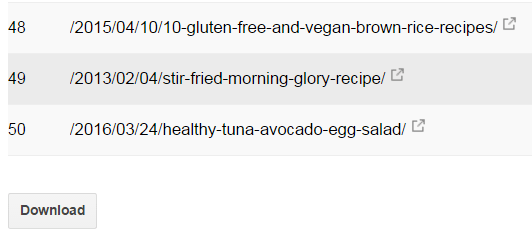
Download Search Console
- Option 1 � Optimize all the posts (skip the following section)
- Option 2 � Focus only on the posts that will give you the largest gains
But, if you�re like most people trying to work efficiently, I�m going to give you some highly adjustable criteria that you can use to identify the posts that will give you the most bang for your buck.
That criteria is:
- A CTR lower than 1%
- A �high� impression rate (what you consider high depends on your blog / it�s traffic)
- A position between 1 to 30
Given that, create three columns used specifically for the criteria, and use IF statements to indicate whether or not the post is getting high impressions, how it�s ranking, and if the click through rate is lower than 1%.
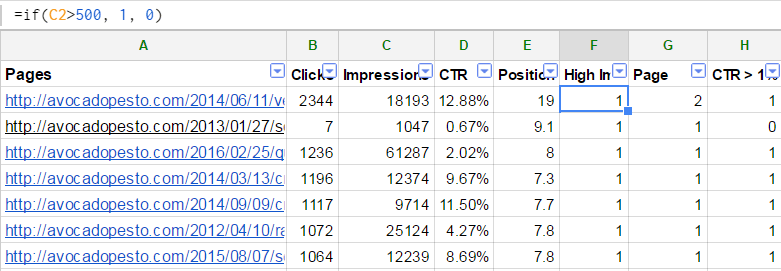
OnPage SEO Stats
How To Determine Which Keywords You Should Be Targeting
You have your target posts, so let�s find out what keywords for each posts you should be targeting.Go back to Google Search Console to the same screen that had all your posts and find a post that you want to optimize. Note � you may have to go to the bottom and increase the number of results to show more.
Click the post, and then adjust the settings from Pages to Queries

Search Console Queries

Sort By Impressions
How To Optimize The Post For These Keywords
Once you�ve built your list of blog posts ripe for optimization, you�re all set to get started on the actual process of updating them.I highly recommend Yoast�s WordPress plugin where you can enter your focus keyword and it spits out recommendations.
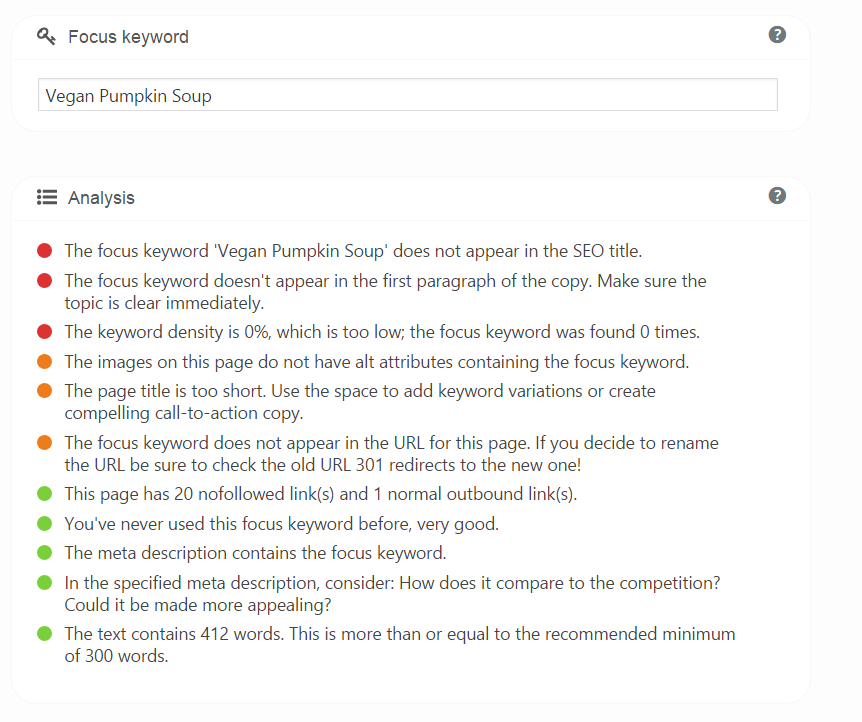
Yoast SEO WordPress Plugin
Once you have mostly all greens, you�re done.
Beyond Yoast�s plugin, there are several things you can do to improve a post, such as.
- Add images with alt text
- Fix grammar and style issues
- Add more research-backed stats or update cited sources to more recent, high authority ones
- Add more categories, tags, or subheadings
- Embed more shareable multimedia content (explainer videos, slideshare decks, infographics)
- Reorganize and reword several parts or even the whole article for better readability (for some cases)
The Results
Between August and December of 2016, I used exactly this method to optimize nearly 200 old posts on AvocadoPesto, my girlfriend�s food blog.Mind you, we did very little in the ways of adding new content, rewriting, or adding images. The primary focus was simply keyword adjustment and following Yoast�s guidelines. On average, optimizing each post took about 10 minutes, so in total the project took around 30 hours.
Here are the results:
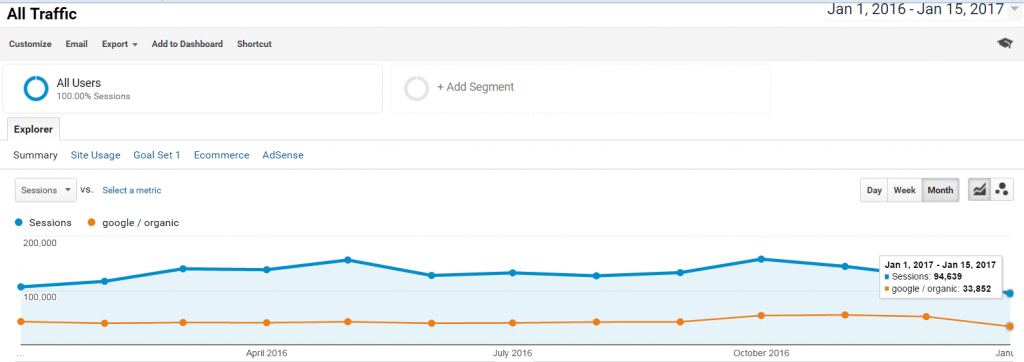
Onpage SEO Results
In September, after we started optimizing, there was a noticeable uptick to 55k visitors; an increase of almost 40%!
January, being only half over, is on track to surpass 60k visitors, which would be a 50% increase overall.
Not bad for less than a week�s worth of work.
Conclusion
Now that you know my step by step process, it�s time to take your old (or dead) content out for a makeover. What I�ve shown you is not something overly technical or complicated, and honestly can be accomplished with the help of a dedicated assistant.Sumber : thehoth.com
http://belajar-cara-membuat-website.blogspot.co.id/
http://ide-peluang-bisnis.blogspot.co.id/p/jasa-pembukuan.html
http://ide-peluang-bisnis.blogspot.co.id/p/program-persediaan-otomatis.html
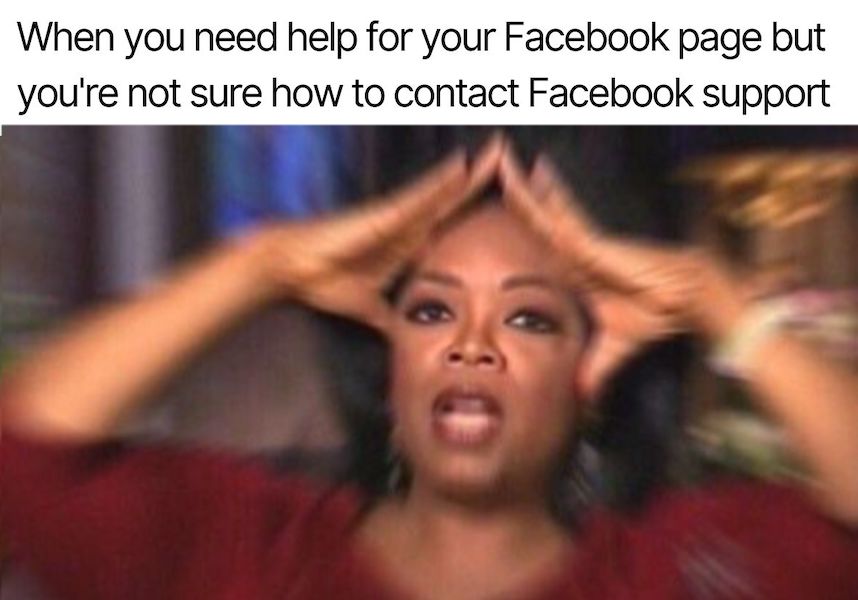
Tidak ada komentar:
Posting Komentar